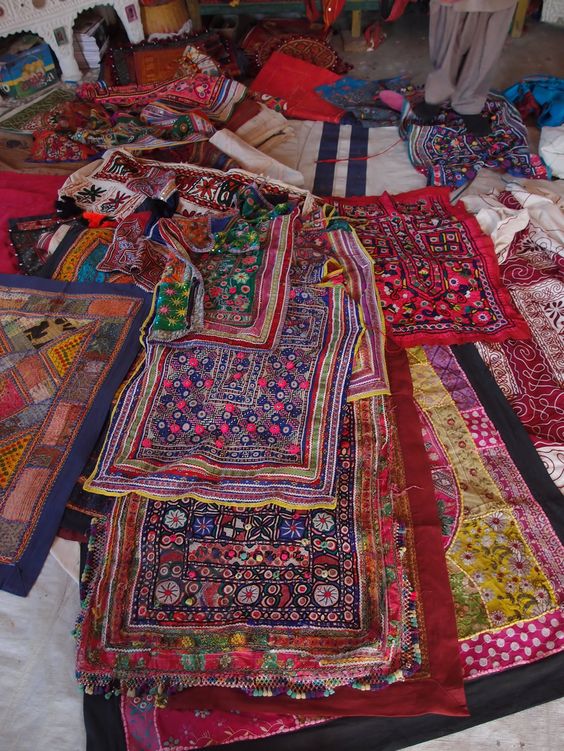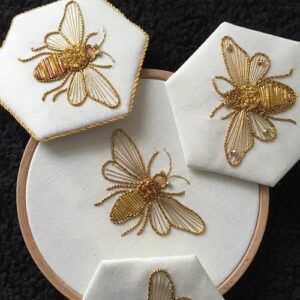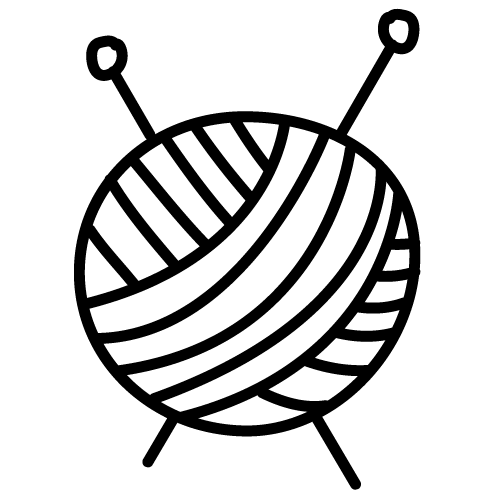Everything you need to know about
Meghwal Embroidery.
Who are Meghwal?
Meghwal is a tribe residing mainly in Rajasthan.
The Meghwals are different from others in terms of humanity and artistic lifestyle.
Meghwal are involved in their conventional occupation.
They now know the significance of education and pursue it to earn money.
However, some are still involved in embroidery.
These are mostly women.
Meghwal are also known as Megh and Meghwar.
The plural of Meghwal is Meghwals.
Megh means rain also the community pray for rain.
A majority of the Meghwals are Hindu by religion.
Thus, the Meghwals believe that they are children and admirers of Saints.
These Saints are responsible for rain in dry regions of India.
What is Meghwal Embroidery?
Meghwal Embroidery is an essential component of the city of Bikaner which is 80 kilometres away from Rajasthan in India.
It is practised on clothes worn or items given at the time of the wedding and as Dahej or dowry trousseau to the bride from mother.
It includes items such as handbag, blanket and so on.
What are the characteristics of Meghwal Embroidery?
Meghwal embroidery requires threads of different colours, beautiful designs and mirrors and other reflecting options.
The material is in great demand at the time of the festivals because of the colours.
The designs in any festival cannot be matched.
Meghwal doesn’t trade Meghwal embroidery clothes but also wear them.
The embroidery is famous for its structure.
Are there any classifications?
Mirrors are an essential component of Meghwal Embroidery.
Meghwal Embroidery is known for its heavy coverage, beautiful colours, detailed themes and finished edges.
Meghwal embroidery is known to be broadly classified as kacho, meaning light and pakko or pako meaning heavy.
Kaccho and pakko have different patterns.
Kaccho uses a running stitch, backstitch, satin thread stitch, herringbone or cross-shaped stitch and so on.
Pakko is a solid blockchain and dual buttonhole stitch embroidery.
The theme is of a flower which has been placed symmetrically.
The themes that are used in pakko are drawn in sand with the use of needles.
There are some other classifications as well, such as:
Suf
Suf embroidery requires concern and various triangles are drawn on the fabric.
These triangles are known as suf.
Suf are worked along with warp and weft of fabric with stitching performed using satin thread from the backside of the material.
It does not require a theme.
This idea gives independence to the craftsman as they can imagine their design themselves and then prepare them.
It also led to a wide variety of designs available.
Although the patterns are cut in the reverse order.
The craftsman performing suf needs to be experienced and must have a knowledge of geometrical shapes and good vision.
The artists exhibit craft in detail, adding geometrical shapes with small triangles and brilliant stitches.
Khaark
Khaark embroidery covers the whole cloth using geometrical shapes and is precise.
While filling geometrical shapes, the craftsmen also add block squares which are black-coloured.
Next, the spaces are covered with satin thread stitch, but unlike suf embroidery, these use the front side of the warp and weft.
Patchwork and Appliqué
The tradition of patchwork and appliqué is common in many communities.
Skilled artisans require an excellent vision for mostly all types of embroidery.
By the time women turn fort, they start losing their vision.
It led to the conversion of expertise and collection of patterns to patchwork.
It was a tradition that helped in making the best use of old clothes which is a merit.
Mukka
Mukka is an expressive way of using gold or silver- coloured thread.
The concept of design is taken from embroiders belong to the Muslim religion.
There have been instances where both pakko and mukka embroiders have to collaborate to produce excellent embroidery work.
Did we miss something?
Let us know in the comments down below!











